Insight on amendment to finance Bill 2021
Author: S K AGRAWAL AND CO CHARTERED ACCOUNTANTS LLP; Published on: March 26, 2021
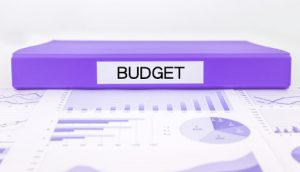
The Lok Sabha has passed the Finance Bill 2021 on 23-03-2021 after some amendments. The Bill was not passed originally as presented on Budget day. Some amendment to the finance bill 2021 was placed and incorporated in the Finance Bill 2021 before passing the same in the Lok Sabha.
To read our insights on the issue, please click here.
CBDT notified manner to compute annual accretion related to excess contribution made by employer to welfare funds
Author: S K AGRAWAL AND CO CHARTERED ACCOUNTANTS LLP; Published on: March 8, 2021

Contribution by employer over and above 12% of salary to recognized provident fund (RPF) is treated as salary under section 17(1)(vi) in the hand of employee. Further as amendment brought by Finance Act 2020 (Applicable from Assessment Year 2021-22), if the aggregate of the contribution to RPF, National Pension Scheme and Superannuation Fund made by the employer exceeds 7.5 lacs in a financial year, such excess shall be deemed as perquisites under section 17(2)(vii) in the hand of employee.
Consequent to the above amendment, Finance Act, 2020 also inserts sub-clause (viia) in clause (2) of the said section to provide that annual accretion by way of interest, dividend or any other amount of similar nature during the previous year to the balance at the credit of aforesaid fund/scheme to the extent it relates to the perquisite under section 17(2)(vii) (i.e. amount in excess of Rs. 7,50,000), shall also be treated as perquisite. Further it was also prescribed that CBDT will provides rules for the purpose of computation of such perquisite u/s 17(2)(viia) of the Act.
Now, in exercise of the power vested in section 17(2)(viia), CBDT has prescribed manner for computation of such annual accretion by inserting a new rule “3B: Annual accretion referred to in the section 17(2)(viia)” under the Income Tax Rules, 1962 vide Notification No. 11/2021 Dated 05-03-2021. The same is discussed hereunder: –
For the purposes of section 17(2)(viia) of the Act, annual accretion by way of interest, dividend or any other amount of similar nature during the previous year (hereinafter referred to as the current previous year) to balance to the credit of the fund or scheme referred to in section 17(2)(vii) of the Act shall be the amount or aggregate of amounts computed in accordance with the following formula, namely:—
TP= (PC/2)*R + (PC1+ TP1)*R
Where,
TP = Taxable perquisite under section 17(2)(viia) of the Act for the current previous year;
TP1 = Aggregate of taxable perquisite under section 17(2)(viia) of the Act for the previous year or years commencing on or after 1st day April, 2020 other than the current previous year (See Note);
PC = Amount or aggregate of amounts of principal contribution made by the employer in excess of Rs. 7.5 lakh to the specified fund or scheme during the previous year;
PC1 = Amount or aggregate of amounts of principal contribution made by the employer in excess of Rs. 7.5 lakh to the specified fund or scheme for the previous year or years commencing on or after 1st day April, 2020 other than the current previous year (See Note);
R= I/ Favg ;
I = Amount or aggregate of amounts of income accrued during the current previous year in the specified fund or scheme account;
Favg = (Amount or aggregate of amounts of balance to the credit of the specified fund or scheme on the first day of the current previous Year + Amount or aggregate of amounts of balance to the credit of the specified fund or scheme on the last day of the current previous year)/2.
Note: Where the amount or aggregate of amounts of TP1 and PC1 exceeds the amount or aggregate of amounts of balance to the credit of the specified fund or scheme on the first day of the current previous year, then the amount in excess of the amount or aggregate of amounts of the said balance shall be ignored for the purpose of computing the amount or aggregate of amounts of TP1 and PC1.”.
To download, this please click here.
INSIGHTS ON DIRECT AND INDIRECT TAX PROPOSAL VIDE BUDGET 2021
Author: S K AGRAWAL AND CO CHARTERED ACCOUNTANTS LLP; Published on: February 2, 2021
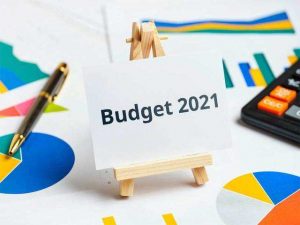
The Hon’ble Finance Minister Smt. Nirmala Sitharaman has presented “The Finance Bill, 2021” on the 01st day of February 2021. Insights on broad proposals under Direct and Indirect Tax may be downloaded from here.
Direct Tax Proposal – Click here.
Indirect Tax Proposal – Click here.
Atmanirbhar Package 3.0 – Effect on Income Tax & other Incentive.
Author: S K AGRAWAL AND CO CHARTERED ACCOUNTANTS LLP; Published on: November 13, 2020
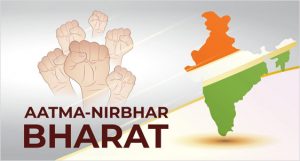
On 12th of November 2020, Union Minister for Finance & Corporate Affairs Smt. Nirmala Sitharaman has announced 12 key measures, as part of the Government of India’s stimulus to the economy, under AatmaNirbhar Bharat 3.0. Key points related to Income Tax and some incentive are brief hereunder –
1) Income Tax relief for Developers & Home Buyers –
As a part of the announcement, the finance minister has increased the safe harbour limit under section 43CA and section 56(2)(x) of the Income Tax Act from 10% to 20%.
Presently, the difference between the value adopted by the stamp valuation authority and the actual sale consideration, if it exceeds 10% is deemed as Income in the hand of both sellers (developers) u/s 43CA and buyer under section 56(2)(x).
The FM decided to increase the tolerance limit u/s 43CA and 56(2)(x) for the difference between the value adopted by the stamp valuation authority and the actual sales consideration to 20% for the period from the date of announcement (12-11-2020) to 30-06-2021 in respect of the primary sale of a residential unit of value up to Rs. 2 Crores.
2) Integration of GST data with Income Tax –
The Income Tax department and GST department has now started sharing data with each other. Consequently, now the Form 26AS of Income Tax is reflecting the turnover as reported in GSTR 3B.
3) Rs 1.46 lakh crore boost for Atmanirbhar Manufacturing Production linked incentives (PLI) for 10 Champion Sectors –
10 Champion Sectors will be covered under the Production Linked Incentives Scheme to help boost competitiveness of domestic manufacturing. This will give a big boost to economy, investment, exports and job creation. A total amount of nearly 1.5 Lakh Crore has been earmarked across sectors, for the next five years. The ten sectors are – Advance Cell Chemistry Battery, Electronic/Technology Products, Automobiles & Auto Components, Pharmaceuticals Drugs, Telecom & Networking Products, Textile Products, Food Products, High-Efficiency Solar PV Modules, White Goods (ACs & LED), and Specialty Steel. The PLI scheme will be implemented by the concerned ministries/departments.
4) Atamnirbhar Bharat Rozgar Yojana –
If EPFO-registered establishments take in new employees without EPFO registration or those who lost jobs earlier, the Yojana will benefit these employees.
Beneficiaries / New Employees under the scheme would be:
Any new employee joining employment in EPFO registered establishments on monthly wages less than Rs.15,000
EPF members drawing monthly wage of less than Rs.15,000 who made exit from employment during COVID Pandemic from 01.03.2020 to 30.09.2020 and is employed on or after 01.10.2020.
Eligibility criteria for establishment:
Establishments registered with EPFO if they add new employees compared to reference base of employees as in September 2020 as under:
- minimum of two new employees if reference base is 50 employees or less.
- minimum of five new employees if reference base is more than 50 employees.
Establishments registering with EPFO after commencement of Scheme to get subsidy for all new employees
Subsidy support from Central Government:
Central Govt. will provide subsidy for two years in respect of new eligible employees engaged on or after 01.10.2020 at following scale:
- Establishments employing up to 1000 employees: Employee’s contributions (12% of Wages) & Employer’s contributions (12% of wages) totaling 24% of wages
- Establishments employing more than 1000 employees: Only Employee’s EPF contributions (12% of EPF wages)
The subsidy support to get credited upfront in Aadhaar seeded EPFO Account (UAN) of eligible new employee. The scheme will be effective from October 1, 2020 and operational till 30th June 2021. Detailed of this scheme is yet to be notified by the Government.
This note is the summary of the press release dated 12-11-2020.
To download our newsletter, please click here.
CBDT amends Tax Audit report, Transfer pricing report and ITR-6 pursuant to newly notified concessional tax regimes
Author: S K AGRAWAL AND CO CHARTERED ACCOUNTANTS LLP; Published on: October 5, 2020

CBDT vide notification number 82/2020 dated 01-10-2020 notifies amendments in Tax Audit Report in Form 3CD, Transfer Pricing audit report in Form 3CEB, Rule 5 relating to depreciation and ITR-6 for AY 2020-21 pursuant to the newly notified concessional tax regimes under Sections 115BAA [for companies], 115BAB [for manufacturing companies , 115BAC [reduced slab rates for individuals] and 115BAD [for co-operative societies]. Also notifies Forms for exercise of concessional Tax regime for Individual/HUF and Co-operative societies.
Key points of the amendment are hereunder –
1) Rule 5 relating to depreciation has been amended to provide that person opting for new concessional Tax regime, the rate of depreciation allowances shall be restricted to forty percent on the written down value of block of assets.
2) Rule 5 relating to depreciation has been further amended to provide that domestic company opting for new concessional Tax regime under section 115BAA, any unabsorbed additional depreciation which is not allowed to be set off due to opting of new Tax regime, the written down value of the block of asset as on 01st day of April 2019 shall be increased by such depreciation not allowed to be set off.
3) Rule 5 relating to depreciation has been further amended to provide that individual or HUF and Co-operative society opting for new concessional Tax regime under section 115BAC and 115BAD respectively, any unabsorbed additional depreciation which is not allowed to be set off due to opting of new Tax regime, the written down value of the block of asset as on 01st day of April 2020 shall be increased by such depreciation not allowed to be set off.
4) Schedule DPM of ITR-6 relating to “computation of depreciation” has been amended to give the effect of above amendment.
5) Schedule CFL of ITR 6 relating to “details of losses to be carried forward to future years” has been amended to provide the details of business loss adjusted on account of opting for taxation under section 115BAA.
6) New rule 21AF has been inserted to notify a Form 10-IE for making an application for exercise/withdrawal of option of new concessional Tax regime under section 115BAC for Individual/HUF.
7) New rule 21AH has been inserted to notify a Form 10-IF for making an application for exercise of option of new concessional Tax regime under section 115BAD for Co- operative society.
8) The following amendment has been made in Tax Audit Form No. 3CD –
(a) Serial No. 8a has been inserted in form 3CD to provide the following –
“whether the assessee has opted for taxation under section 115BA/115BAA/115BAB?”
(b) Serial No. 18 relating to depreciation as per Income Tax has been amended to give the effect of adjustment made to the written down value under section 115BAA.
(c) Serial No. 32 relating to details of brought forward loss or depreciation allowances has been amended to report the amount of losses/allowances not allowed due to opting of section 115BAA and amount as adjusted by withdrawal of additional depreciation on account of opting for taxation under section 115BAA.
9) Transfer pricing report Form No. 3CEB has amended to report – Has the assessee entered into any specified domestic transaction(s) with any persons referred to in section 115BAB(6) which has resulted in more than ordinary profit expected to arise in such business?
To download this newsletter, please click here.
Clarification on TCS on sale of goods and TDS on E-Commerce operator by CBDT
Author: S K AGRAWAL AND CO CHARTERED ACCOUNTANTS LLP; Published on: September 30, 2020

Finance Act, 2020 inserted a new section 194-O in the Income-tax Act 1961 which mandates that with effect from 1st day of October 2020, an e-commerce operator shall deduct income-tax at the rate of one percent and also inserted sub-section (1H) in section 206C of the Act which mandates that with effect from 1st day of October 2020 a seller receiving an amount as consideration for sale of any goods of the value or aggregate of such value exceeding fifty lakh rupees in any previous year to collect tax from the buyer a sum equal to 0.1 percent of the sale consideration exceeding fifty lakh rupees as income-tax. Detailed FAQs on these provisions has already been circulated by us and the same can be accessed vide this link – http://www.skagrawal.co.in/archives/245
There is ambiguity on certain practical aspects of these provisions. CBDT by exercising the power vested in section 206C(1-I) and 194-O(4) of the Income Tax Act issued guidelines vide a circular No. 17 of 2020 dated 29th September 2020. Insights of the same are numbered below –
1) Clarification on calculation of threshold limit for the financial year 2020-21:
It has been clarified that the threshold limit of Rs. 5 Lacs in case of TDS on E-Commerce and Rs. 50 Lacs in case of TCS on sale of goods shall be computed from 01-04-2020. However, the provision of TDS/TCS shall apply only on transaction done on or after 01-10-2020.
2) Clarification on applicability of TCS provision on sales of goods made prior to 01-10-2020:
It has been clarified that section 206C(1H) applies on receipt of sale consideration and consequently it would apply on all sale consideration (including advance received for sale) received on or after 1st October 2020 even if the sale was carried out before 1st October 2020.
3) Clarification on adjustment for sale return, discount, or indirect taxes while collecting TCS:
It has been clarified that no adjustment on account of sale return or discount or indirect taxes including GST is required to be made for collection of tax under section 206C(1H) since the collection is made with reference to receipt of amount of sale consideration. Hence, TCS has to be collected on entire sale consideration including all Taxes.
4) Clarification on applicability of TCS provision on sale of motor vehicle:
It has been clarified that scope of section 206C(1F) is based on single sale of motor vehicle whereas 206C(1H) is for receipt above 50 lakh rupees during the financial year against aggregate sale of good. Further, while section 206C(1F) is for sale to consumer only and not to dealers, sub-section (1H) is for all sale above the threshold. Hence, Receipt of sale consideration from a dealer would be subjected to TCS under section 206C(1H) of the Act, if such sales are not subjected to TCS under section 206C(1F) of the Act. It has also been clarified that in case of sale to consumer, receipt of sale consideration for sale of motor vehicle of the value of 10 Lacs rupees or less to a buyer would be subjected to TCS under section 206C(1H), if the receipt of sale consideration for such vehicles during the financial year exceeds fifty lakh rupees.
5) Clarification on Applicability of TDS provision on insurance agent or insurance aggregator:
It has been clarified that in years subsequent to the first year, if the insurance agent or insurance aggregator has no involvement in transactions between insurance company and the buyer of insurance policy, he would not be liable to deduct tax under section 194-0 of the Act for those subsequent years. However, the insurance company shall be required to deduct tax on commission payment, if any, made to the insurance agent or insurance aggregator for those subsequent years under the relevant provision of the Act.
6) Clarification on applicability of TDS and TCS provision on transactions carried through various Exchanges and clearing corporations :
It has been clarified that the provisions of section 194-O and section 206C(IH) of the Act shall not be applicable in relation to
-transactions in securities and commodities which are traded through recognized stock exchanges or cleared and settled by the recognized clearing corporation, including recognized stock exchanges or recognized clearing corporation located in International Financial Service Centre;
-transactions in electricity, renewable energy certificates and energy saving certificates traded through power exchanges registered in accordance with Regulation 21 of the CERC;
7) Clarification on applicability of TDS provision on payment gateway –
It has been clarified that payment gateway who also happens to be qualified as E-Commerce Operator will not be required to deduct TDS under section 194-O of the Act on a transaction, if the tax has been deducted by the e-commerce operator under section 194-O of the Act, on the same transaction.
8) Clarification on applicability of TCS provision on Fuel supplied to non-resident airlines –
It has been clarified that the provisions of section 206C(1H) of the Act shall not apply on the sale consideration received for fuel supplied to non-resident airlines at airports in India.
To download this newsletter please click here.
FAQs on New Income Tax provision of TDS and TCS effective from 01-10-2020
Author: S K AGRAWAL AND CO CHARTERED ACCOUNTANTS LLP; Published on: September 29, 2020
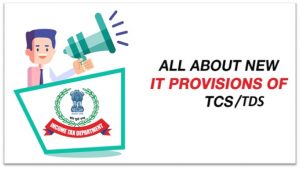 The Finance Act 2020 has inserted three new provisions under TCS and one provision under TDS which will come into effect from 01-10-2020. The TDS provision is relevant on payment made by the e-commerce operator to e-commerce participant whereas TCS provisions are on foreign remittance under LRS scheme, on the selling of overseas tour packages and on the selling of any goods.
The Finance Act 2020 has inserted three new provisions under TCS and one provision under TDS which will come into effect from 01-10-2020. The TDS provision is relevant on payment made by the e-commerce operator to e-commerce participant whereas TCS provisions are on foreign remittance under LRS scheme, on the selling of overseas tour packages and on the selling of any goods.
There is ambiguity on certain practical aspects of these provisions which we have tried to address by way of Frequently Asked Questions (FAQs) hereunder:
FAQs related to TCS on Sale of goods under section 206(IH):-
1) What is the scope of this provision?
Ans: Every person, being a seller, who receives any amount as consideration for the sale of any goods of the value or aggregate of such value exceeding 50 Lacs rupees in any previous year, other than the goods being exported out of India or goods covered in sub-section (1) or sub-section (1F) or sub-section (1G) shall, at the time of receipt of such amount, collect from the buyer, a sum equal to 0.1% of the sale consideration exceeding fifty lakh rupees as income-tax. This provision shall effect from 1st day of October 2020.
2) What is the meaning of the term Buyer for the purpose of this section?
Ans: “Buyer” means a person who purchases any goods, but does not include,
(a) the Central Government, a State Government, an embassy, a High Commission, legation, commission, consulate and the trade representation of a foreign State; or
(b) a local authority as defined in the Explanation to clause (20) of section 10; or
(c) a person importing goods from India.
Hence, on the amount received from a person covered in point (a), point (b) and point (c), TCS shall not require to be collected.
3) What is the meaning of the term Seller for the purpose of this section?
Ans: “Seller” means a person whose total sales, gross receipts or turnover from the business carried on by him exceed Rs. 10 crores during the financial year immediately preceding, the financial year in which the sale of goods is carried out.
4) What would be the point of collection of tax?
Ans: The Section provides trigger point at the time of receiving any amounts as consideration for the sale of any goods.
5) What is the rate of TCS under this provision?
Ans: Rate of TCS shall be 0.10 % of the sale consideration exceeding 50 Lacs. However, in terms of a press release dated 13th May 2020, the rate of TDS/TCS except on salary has been reduced to 75% of its current rate. Thus, in this case, TCS shall be collected at the rate of 0.075%. It is also to be noted that In case of non-availability of PAN or Aadhaar of the buyer, the TCS shall be collected at the rate of 1%.
6) What is the threshold limit for the purpose of this section?
Ans: TCS shall be collected on consideration received from a buyer in a previous year in excess of fifty lakh rupees.
7) Whether TCS is required to be collected on trade receivables of goods standing in books as on 30th September 2020?
Ans: The section seems to indicate that only sales made after 01-10-2020 will be covered. However, some person has raised query regarding TCS on sale made before 01-10-2020. A clarification from CBDT would be beneficial.
8) Whether the consideration will include the amount collected towards GST?
Ans: In terms of Section 145A irrespective of the treatment in books of accounts, the value of sales will include the amount of any tax recovered. Hence the consideration amount will be inclusive of GST for the purpose of collection of TCS unless otherwise clarified.
9) Whether TCS will be applicable on Export Sales?
Ans: TCS would not be applicable in respect of Export Sales as the consideration for sale of goods excludes consideration towards goods exported out of India and accordingly, the definition of buyer excludes a person importing goods from India.
10) What if the buyer is liable to deduct TDS on the consideration?
Ans: It has been clarified in the section that if the buyer is liable to deduct tax at source under any other provision of this Act on the goods purchased by him from the seller and has deducted such amount, the TCS shall not be collected on such sum. For example, if there is a combined sale of goods and service, then buyer shall deduct TDS on the service portion if it is specifically segregated in the Bill or on the total bill if the same is not segregated. In such case, TCS shall not be collected on the amount on which TDS has been deducted by buyer.
FAQs related to TCS on foreign remittance under LRS Scheme under section 206(IG)(a):-
1) Who is the person responsible to collect TCS under this section?
Ans: Under this section, the Authorized Dealer is responsible to collect TCS.
2) What is the threshold limit for TCS under this section?
Ans: When authorised dealer remits an amount or an aggregate of amounts other than amount received for purchase of overseas tour programme package exceeding 7 lacs, then TCS shall be required to be collected.
3) What is the point of collection under this section?
Ans: TCS shall be collected at the time of debiting the amount payable by the buyer or at the time of receipt of such amount from the said buyer, by any mode, whichever is earlier.
4) What is the rate of TCS under this section?
Ans: Rate of TCS shall be 5% of the amount or aggregate of amounts in excess of seven lacs rupees remitted by buyer in a financial year. However, if the amount being remitted out is a loan obtained from any financial institution as defined in section 80E, for the purpose of pursuing any education, then TCS shall be collected at the rate of 0.5% of amount in excess of seven lacs.
5) What is LRS scheme of RBI?
Ans: Under the Liberalised Remittance Scheme, all resident individuals, including minors, are allowed to freely remit up to USD 2,50,000 per financial year (April – March) for any permissible current or capital account transaction or a combination of both. Further, resident individuals can avail of foreign exchange facility for the purposes mentioned in Para 1 of Schedule III of FEM (CAT) Amendment Rules 2015, dated May 26, 2015, within the limit of USD 2,50,000 only.
FAQs related to TCS on sale of overseas tour program package under section 206(IG)(b):-
1) What is overseas tour program package?
Ans: It has been clarified in the section that “overseas tour program package” means any tour package which offers visit to a country or countries or territory or territories outside India and includes expenses for travel or hotel stay or boarding or lodging or any other expenditure of similar nature or in relation thereto.
2) Who is the person responsible to collect TCS under this section?
Ans: Under this section, the seller of a tour program package who receives any amount from a buyer being the person who purchases overseas such package, responsible to collect TCS.
3) What is the threshold limit for TCS under this section?
Ans: There is no threshold limit for collecting TCS under this section with respect to sale of overseas tour program package. Hence, TCS shall be required to be collected at any amount.
4) What is the point of collection under this section?
Ans: TCS shall be collected at the time of debiting the amount payable by the buyer or at the time of receipt of such amount from the said buyer, by any mode, whichever is earlier.
5) What is the rate of TCS under this section?
Ans: The rate of TCS shall be 5% of the amount receives from the buyer.
6) Whether Authorized dealer and seller, both will collect TCS?
Ans: It has been clarified in the section that if the seller of overseas tour program package has collected the TCS, the authorized dealer shall not collect the TCS on an amount in respect of which the sum has been collected by the seller.
FAQs related to TDS on payment made by the e-commerce operator to e-commerce participant under section 194-O:
1)What is the scope of TDS on E-Commerce Transactions under Section 194-O?
Ans: Insertion of new section 194-O is to bring the e-commerce participant within the tax ambit i.e. there will be transparency on the income earned by seller of goods/provider of service through digital platforms provided by the E-commerce operator. The section states that TDS is to be deducted and paid by the e-commerce operators for facilitation of service of selling of goods/provision of service provided by it through its digital or electronic facility or platform.
2) What is the meaning of the term “E-Commerce Operator”?
Ans: Section 194-O defines the term “e-commerce operator” means a person who owns, operates or manages digital or electronic facility or platform for electronic commerce.
3) What is the meaning of the term “electronic commerce”?
Ans: Section 194-O defines the term “electronic commerce” means the supply of goods or services or both, including digital products, over digital or electronic networks. Further, for the purpose of this section, services include fees for technical services and fees for professional services, as defined in the Explanation to section 194J.
4) What is the meaning of the term “ E-Commerce participant”?
Ans: Section 194-O defines the term “e-commerce participant” means a person resident in India selling goods or providing services or both, including digital products, through digital or electronic facility or platform for electronic commerce.
5) What is applicability of TDS on E Commerce Transactions under Section 194-O?
Ans: The provision of this section will be applicable from 1st day of October 2020 on every E- Commerce operator making payment to E-Commerce Participants.
6) When the TDS is required to be deducted?
Ans: E-commerce operator is required to deduct TDS at the time of credit or payment, whichever is earlier. Credit means credit to the account of e-commerce participants and payment means payment through any mode.
7) What is the rate of TDS under this section?
Ans: TDS under this section shall be deducted at the rate of 1 % of the gross amount of sale or services provided by the E-Commerce Participants.
However, in view of the press release dated 13.05.2020 amid COVID pandemic, the rate of TDS only for the financial year ended 31.03.2021 shall be 0.75 %.
In case the E-commerce participant does not furnish PAN or Aadhar Number to the e-commerce operator, TDS shall be deducted at the rate of 5%.
8) What is the monetary threshold limit for deducting TDS?
Ans: E-commerce operator is not required to deduct TDS, if the amount paid or credited to Individual or HUF during the previous year does not exceed Rs. 5 Lakhs. However, to take the benefit of threshold limit of Rs. 5 Lakhs, such individual or HUF must furnish his PAN or Aadhaar to e-commerce operator.
Further this section also provides that if a buyer of goods or service has made payment directly to e-commerce participant it shall be deemed that payment has been made by e-commerce operator or account has been credited by e-commerce operator and same shall be added in gross amount for the purpose of threshold limit and TDS shall also require to be deducted on such amount by the E-commerce operator.
9) Shall other provisions of TDS be Applicable?
Ans: A Transaction in respect of which TDS has been deducted by the e-commerce operator under this section or TDS is not deducted due to the limit of monetary threshold provided under this section, then other provisions of the TDS shall not be applicable.
To download the file, please click here.
Key highlights of “The Taxation and Other Laws (Relaxation and Amendment of certain provisions ) Bill, 2020”
Author: S K AGRAWAL AND CO CHARTERED ACCOUNTANTS LLP; Published on: September 21, 2020
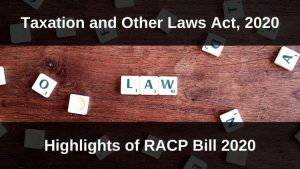
On 18-09-2020, Finance Minister Smt. Nirmala Sitharaman introduced the “Taxation and Other Laws (Relaxation and Amendment of Certain Provisions) Bill, 2020” in the Lok Sabha for consideration. This bill seeks –
- To replace the Taxation and other Laws (Relaxation of Certain Provisions) Ordinance, 2020 [introduced in March 2020 to provide relaxation in timelines amid Covid-19 pandemic and amended on June 24th granting further reliefs];
- To legislate the Faceless Assessment Scheme by bringing in new Sections [i.e Sections 144B, 157A, 264A, 264B]
- To propose amendments in various sections [i.e. Sections 92CA(8), 253(8)], whereby it is provided that all functions including assessments, rectification, appeal filing, transfer pricing, appeal effect, DRP will become faceless;
- To amend the Direct Tax Vivad se Viswas Act, 2020 to extend the date for payment without additional amount to 31st December 2020;
- To empower the Central Government to notify certain dates relating to filing of declaration and making of payment;
- To propose amendment in the Finance Act, 2020 to clarify regarding capping of surcharge at 15% on dividend income of the FPIs.
Extension of Time Limit:
- The migration of registration of Trust/Institutions/Scientific research companies to the new section 12AB/80G/10(23C)/35 has been postponed and is made applicable from 01-04-2021 as against 01-06-2020 (later was extended to 1-10-2020).
Faceless Assessment Scheme:
- Proposes to insert the various sections to legislate and support faceless assessment scheme with effect from 1st November 2020 for which the Central Govt. may make a scheme, by notification in the Official Gazette.
- The Bill proposes to insert new Sec.144B legislating the faceless assessment scheme notified on 13th August 2020. The new section details the faceless assessment process through National Faceless Assessment Centre [Erstwhile NeAC] and Regional Faceless Assessment Centre [erstwhile ReAC] as notified in CBDT notification 60 and 61 of 2020.
- Additionally specifies the procedure for faceless assessment in transfer pricing cases where reference is made to DRP.
- Proposes proceeding for faceless reassessment, faceless rectification, faceless recovery, faceless revision orders u/s 263 and 264, faceless appeal effect orders.
Other Amendment Proposed:
- Section 115AD – Tax on income of Foreign Institutional Investors (FII) from securities or capital gains arising from their transfer – The rate income tax on income in respect of securities w.e.f. 1 April 2020 will be 20% in case of FII; and 10% in case of specified fund. In case of fund, it is clarified that the provision will apply only to the extent of income that is attributable specified to units held by non-resident (not being a permanent establishment of a non-resident in India) calculated in the prescribed manner.
- Proposes to introduce Section 197B and Sec.206C(10A) to legislate the reduction of TDS/TCS by 25% w.e.f 14th May 2020 till 31st March 2021.
- The Bill Proposes to amend Finance Act, 2020 to clarify regarding capping of surcharge at 15 percent on dividend income of the Foreign Portfolio Investor.
To download the file, please click here.
Recent Amendment and Mandatory Compliance relating to Trust
Author: S K AGRAWAL AND CO CHARTERED ACCOUNTANTS LLP; Published on: September 1, 2020
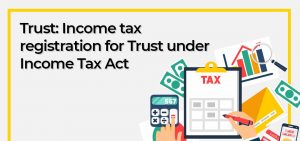
- Under the Income Tax Act 1961, all the existing charitable and religious institutions (Trusts) are registered/approved under the following sections:
- Section 10(23C)
- Section 12A (prior to 1996)
- Section 12AA (registered after 1996)
- Section 80G
- Finance Act 2020 has brought in major changes for Trusts by introducing new section 12AB replacing section 12AA and bringing in similar amendments in section 10(23C) and Section 80G. These changes shall be applicable with effect from 1st Oct 2020 (Extended vide Press Release Dated 09.05.2020).
-
- Now the process of registration and approvals of Trusts shall be completely electronic under which a unique registration number (URN) shall be issued to all new and existing Trusts.
- All the trusts or institutions which have already been granted registration/approval under section 12A/12AA/10(23C)/80G are required to make a new application under the new section 12AB or amended provisions of section 10(23C) or 80G within 3 months from the effective date 01.10.2020 i.e., within 31st December 2020. On receipt of the application, the concerned Principal Commissioner or Commissioner shall grant the registration/approval without any enquiries within 3 months from the end of the months in which application is received by Commissioner.
- It is worthwhile to note that registration granted above shall now be valid only for 5 years and after the expiry of every 5 years, the trust needs to again make an application for renewal of its registration/approval at least 6 months prior to the expiry date for which registration was previously granted.
- Finance Act 2020 also introduced the concept of provisional registration for new Trusts which are yet to start their charitable activities. In this case, the application for provisional registration has to be filed at least 1 month before the commencement of the previous year relevant to the assessment year from which the registration is sought and, in such case, the registration/approval shall be granted for 3 years without any enquiries.
- It is worthwhile to note that Trusts provisionally registered above shall be required to convert their provisional registration into normal registration at least 6 months before the expiry of the period of the provisional registration or within 6 months of commencement of its activities, whichever is earlier.
- Finance Act 2020 also mandates that Trusts which have adopted or undertaken modifications of the objects in a manner not conforming to the conditions of registration shall make an application within 30 days from the date of said adoption or modification.
To download the file, please click here.
Transparent Taxation : Honoring the Honest – Analysis
Author: S K AGRAWAL AND CO CHARTERED ACCOUNTANTS LLP; Published on: August 19, 2020
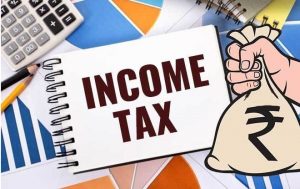 Two days before Independence Day i.e., on 13th of August 2020, the Hon’ble Prime Minister Shri Narendra Modi launched a platform “Transparent Taxation: Honoring the Honest” to honor the honest Taxpayer. Vide this platform, reforms like “Faceless Assessment”, “Faceless Appeal” and “Taxpayers Charter” are introduced. The Key highlights of the same are listed below:-
Two days before Independence Day i.e., on 13th of August 2020, the Hon’ble Prime Minister Shri Narendra Modi launched a platform “Transparent Taxation: Honoring the Honest” to honor the honest Taxpayer. Vide this platform, reforms like “Faceless Assessment”, “Faceless Appeal” and “Taxpayers Charter” are introduced. The Key highlights of the same are listed below:-
-
Faceless assessment and Taxpayers Charter came into effect from the 13th of August 2020 while faceless appeal will be applicable from the 25th of September 2020.
- Taxpayers can avail of the new income tax regime from this financial year onwards and enjoy the benefits of relatively less documentation and greater ease of compliance increased liquidity in the hands of the taxpayer and flexibility of investment choices.
- The emphasis is on making every rule, law, and policy people-centric and public friendly.
- New arrangements and new facilities starting today, strengthens commitment towards ‘Minimum Government, Maximum Governance’. This is a big step in the direction of reducing interference of the government in the life of the countrymen.
- Right now, the tax department of the city we live in handles everything. Now, this is over. With technology, matters of scrutiny will be assigned to IT department officials randomly. The computer will decide it. This will keep changing constantly. Artificial Intelligence and Data analytics will be used for team-based assessment and review of the cases.
- Apart from issues related to assessment, appeals will also be faceless. The identity of the officer deciding appeal will remain unknown. The appellate decision will be Team-Based & Reviewed.
- The department is helping taxpayers to be able to understand how to fill pre-filled tax forms. The new platform aims to ease compliance burden, fair objective fair system.
- Intrusive surveys cannot be undertaken by the field officers. Only the Investigation wing and TDS wing officers can do the same after taking approval from an officer of the level of Chief Commissioner.
- CBDT has carried out several major tax reforms in Direct Taxes recently, some of which are as under: –
-
- Last year, corporate tax rates were reduced from 30% to 22%, and for new manufacturing units, the rates were reduced to 15%.
- The dividend distribution tax was also abolished.
- To increase the ease of compliance for taxpayers, the IT Department has moved forward with the prefilling of income tax returns to make compliance more convenient for individual taxpayers.
- Compliance norms for startups have also been simplified.
- For the resolution of pending tax disputes, the IT Department also brought out the Direct Tax “Vivad se Vishwas Act, 2020”,
- To effectively reduce taxpayer grievances and litigation, the monetary thresholds for filing of departmental appeals in various appellate courts have been raised.
- The IT Department has also made efforts to ease compliances for taxpayers during the COVID-19 pandemic by extending statutory timeliness for filing returns, as also releasing refunds expeditiously to increase liquidity in the hands of taxpayers.
- Scope of Reporting of specified financial Transaction is also expanded.
To download the complete notes, please click here Transparent Taxation – Honoring The Honest